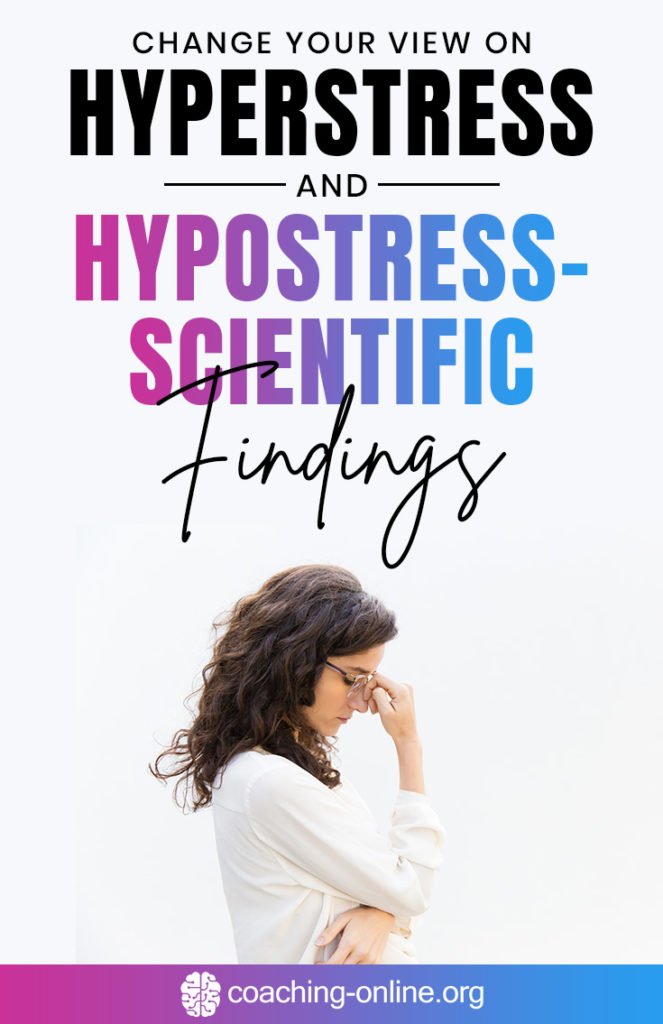Today, I’m going to tell you why stress – also known as “hyperstress” – may not be the enemy you believe it to be.
Most of us think that stress is damaging to our health.
After all, the causal link between stress and premature death has been proven by science.
But what if I told you that it’s actually the beliefs we have about stress that cause physical health problems?
New scientific research indicates that changing the way you think about stress changes the way you experience it, thus reducing its harmful effects and adding years to your life.
In this article, I’ll show you how.
Let’s get started.
How Your Perspective Affects Your Stress Response
We all experience stressful situations in life – work, relationships, and health can all take their toll and make things feel overwhelming.
Often, stressors are unexpected and may also be out of our control.
But one thing is for sure – try as we might, we cannot avoid stress completely.
In fact, some research indicates that people who try to avoid stress may be more likely to experience its negative effects than those who embrace it.

People who view stress as helpful, rather than harmful, mitigate its negative effects and are more likely to enjoy better health, greater emotional wellbeing, and increased productivity at work.
Not only that, but they actually have a decreased risk of death due to physical conditions – such as heart disease – that may be caused by stress.
Is There a Way to Minimize the Effects of Stress?
According to Stanford psychologist Kelly McGonigal, there is.
Changing your perspective on stress changes your experience of it, and this changes the way it affects your body and mind.
For example, if you feel your heart racing as a result of stress, tell yourself that it is pumping more blood to your brain in order to enhance your performance.
This can be really helpful when you face a stressful situation at work.
It creates the emotion of courage, helping your mind to stay clear as you carry out the task at hand.
Similarly, when you feel your adrenaline surging and your muscles trembling, you might want to think of it as your body preparing you for action.
This can be helpful when you need to give a performance such as a speech or presentation.
What Are the Best Protective Measures Against Stress?
There are 3 main aspects of stress perception that seem to help in mitigating the negative effects of stress.
The first is to view the body’s physical response to stress as helpful, rather than harmful.
The second is to view yourself as resilient and able to handle the situation while seeing it as an opportunity to grow that will make you even stronger.
The third is to remember that stress is a shared human experience. It does not mean you as an individual are inherently flawed.

What Are the Different Types of Stress?
There are 4 main types of stress, each affecting us in different ways.
1. Eustress
This type of stress occurs when enthusiasm, energy, and creativity are needed, such as before giving a speech or performance.
It is generally considered a positive stress if it occurs only for a short period of time.
If it becomes prolonged, it can lead to other types of stress.
2. Distress
Distress is a negative type of stress that arises when an individual undergoes continuous change and uncertainty in their routine, leading to feelings of insecurity and discomfort.
It can be acute, arising and subsiding over a short time period, or chronic, whereby its effects are experienced over a long time, ranging from weeks to months to years.

3. Hyperstress
Hyperstress occurs when an individual is pushed to – or beyond – their limits. It is commonly seen in people who have highly stressful jobs.
It is considered a negative type of stress due to its potentially damaging effects on our health.
Hyperstress will generally impact most areas of a person’s life, including their work, relationships, health, and social life.
4. Hypostress
Hypostress is the opposite of hyperstress and occurs when an individual is bored, understimulated, or unchallenged.
It may arise when an individual has a boring and repetitive job, such as a factory worker.
Although not considered negative in the short term, in the long term it can affect the person’s motivation, performance, and physical health.
What Are the Health Risks of Chronic Stress?
Chronic – or long term – hyperstress, hypostress, and distress might pose a health risk.
As we have seen, hyperstress and hypostress are not necessarily a cause for concern if only experienced during short periods of time.
Depending on how you perceive your stress responses, they may even help you perform better and overcome certain challenges in life.
However, when sustained over long time periods, they may lead to emotional and mental health problems, such as depression and anxiety.
Stress has also been linked to a variety of physical health problems including heart disease, obesity, and diabetes.
While changing your perspective on things can help you overcome hyperstress and hypostress in the short term, it’s important to find ways to minimize them in the long-term.

Related Article: Stress Coach: Ultimate Guide & 8 Best Stress Coaches
How to Mitigate the Effects of Chronic Hyperstress and Hypostress
If it’s not possible to reduce your stressors or change the situation that is causing you to feel stress, it may help you to take time to focus on your emotional wellbeing.
Practices such as meditation, yoga, and journaling can keep you centered and help get you through your day to day challenges.
Working through what you feel with a qualified life coach or therapist may also be beneficial in helping you get past obstacles.
Other things which you can do are:
- Take a walk in nature
- Talk to someone about how you feel
- Practice gratitude every day
- Get plenty of sleep
- Eat fruits and vegetables every day
- Get more exercise
- Work on changing that which you can control and accepting that which you cannot
- Drink at least 2 liters of water per day

Thanks for stopping by and reading my guide. Share this piece with a friend to help them too!
Related Content
Work-Life Balance Coach – 12 Effective Interventions
Self-Coaching Online – 9 Proven Strategies Checklist
